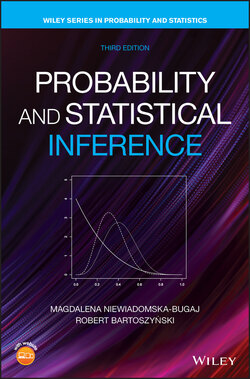Читать книгу Probability and Statistical Inference - Robert Bartoszynski - Страница 87
Solution
ОглавлениеThere are no restrictions here on the number of balls in an urn, or the number of empty urns. To get the answer, let us identify each possible allocation with a string of bars and circles, of the form
with the only condition being that the string should start and end with a bar. The spaces between bars represent urns. Thus, in the arrangement above, the first urn contains balls, the second none, the third 4 balls, and so on. Clearly, the number of distinct arrangements equals —the number of distinct arrangements of bars and circles. Indeed, we have a string of symbols (not counting the two extreme bars), and each arrangement is obtained by specifying places for the symbol .
Example 3.10 shows that the binomial coefficient can be interpreted in two ways. On the one hand, is the number of distinct sets of size that can be chosen out of a set of size . On the other hand, is also the number of distinct strings of indistinguishable elements of one kind and indistinguishable elements of another kind. To see this, it suffices to think of the string as being determined by the choice of “ out of total of ” slots into which we assign elements of the first kind.
